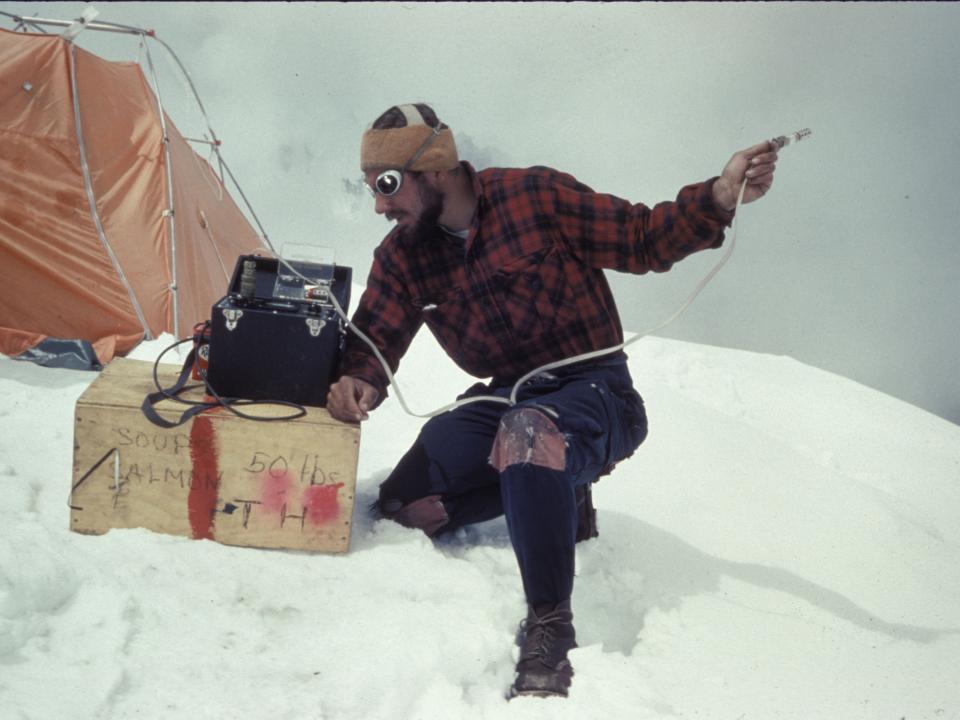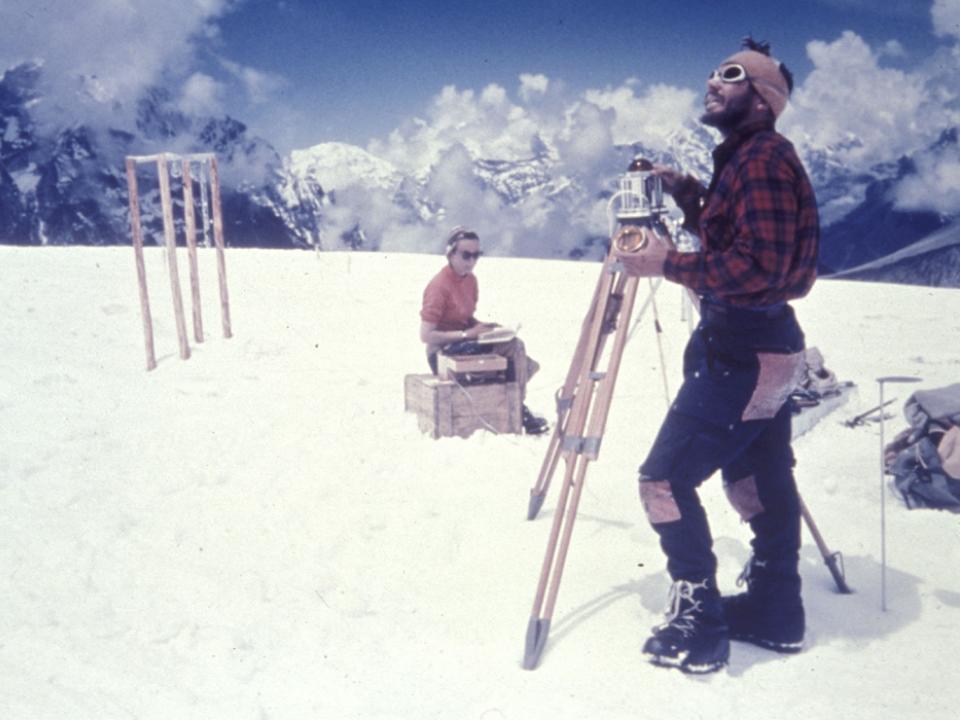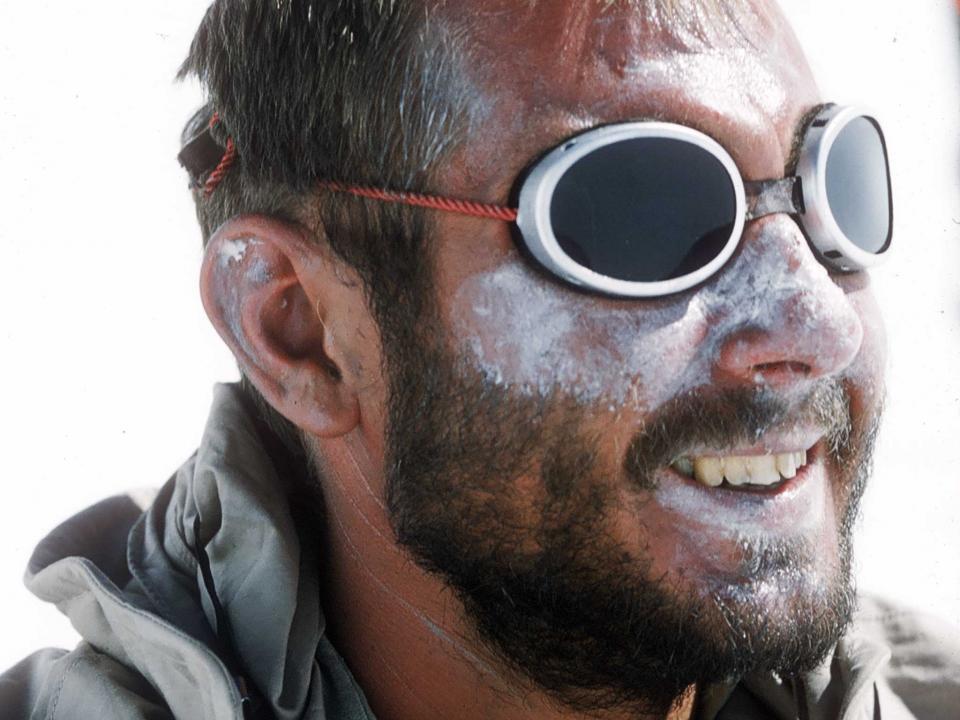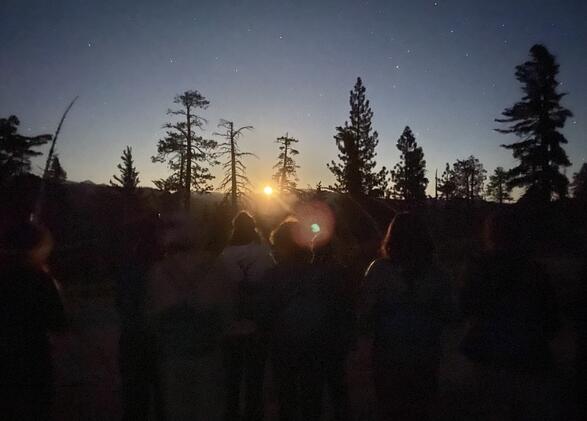Fieldwork, adventure and good, hard work: The Bishop-Marcus story
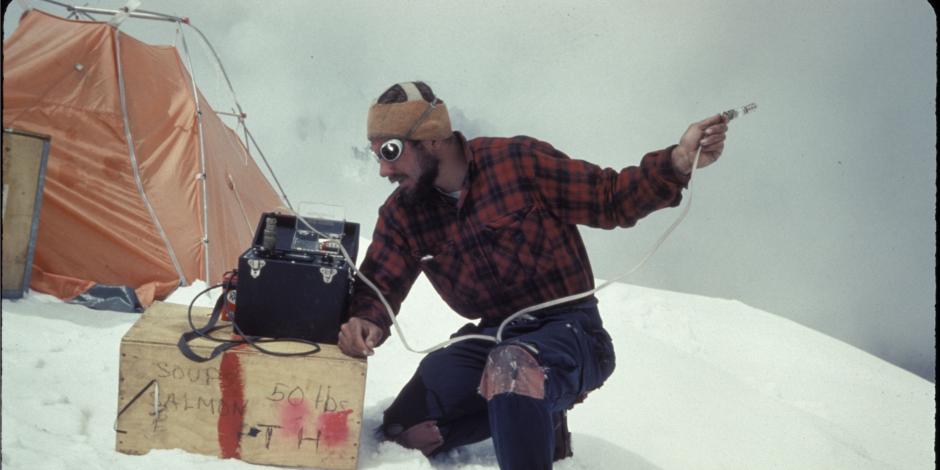
During the winter of 1960-61, Barry Bishop joined the Himalayan Scientific and Mountaineering Expedition to carry out glaciology, meteorology and radiation studies in the Nepal Everest-Mingbo Valley. He was also a subject for a high altitude physiology research project to better understand impacts of prolonged effects of survival above 19,000 feet.
Despite participating in rigorous scientific research, Barry was left with free time on the glacier over the course of the winter. He didn’t read or listen to the radio to fill that free time — instead, he and a group of fellow expedition members made a first ascent of Ama Dablam, a mountain whose icy peak stands at 22,349 feet.
Just two years later, Barry joined the American Mount Everest Expedition (AMEE) as a National Geographic Society staff member to document the first American ascent of the tallest mountain in the world. After a grueling trip that included 18 other Americans, 32 sherpas, 909 porters, 54,000 pounds of gear and the tragic death of one climber near the Khumbu Icefall, the team reached the summit of Mount Everest. Barry had experienced more adversity and achievement as a scientist-adventurer in three years than most do in a lifetime.
“Vision, commitment, suffering. That was my dad,” says Brent Bishop, Barry’s son (and former Olympic Board member).
“That’s part of what I’m looking for when I review applications for NatureBridge’s Bishop-Marcus Award. Hard science, vision, commitment and yeah...some suffering,” he laughs.
The Bishop-Marcus Award, named for Barry Bishop and Melvin Marcus, funds one NatureBridge staff member each year to complete an environmental research project that incorporates challenge, fieldwork and giving back to the organization’s broader community.
The award is inspired by Barry and Melvin: close friends, dedicated researchers, headstrong adventurers and magnamious supporters of NatureBridge throughout their lives. If you read a list of their accomplishments, you could conclude that they were two of the greatest adventurers of the past century: Barry was guiding mountaineering expeditions at age 12; Melvin completed 52 ascents in the Cascade and Olympic mountains by age 19. Barry climbed and documented that 1963 expedition up to the 29,028-foot peak of Mount Everest; Melvin conducted field research in Nepal, Turkey, Alaska, New Zealand and the Grand Canyon. They were geomorphologists, climatologists, mountaineers and geographers, and both Barry and Melvin were posthumously memorialized in The New York Times for their respective achievements. Yet, if you ask the people who were closest to them, “adventure” doesn’t come up as often as you’d think.
“We think of adventure as going off and doing crazy things, but Barry loved the serious part of it,” says Barry’s wife, Lila Bishop, a teacher who also accompanied him on many challenging excursions.
Barry’s son, Brent — an adventurer in his own right who has completed multiple ascents of Mount Everest and won accolades for exploration and alpine climbing — focuses on the studious aspect of his father’s personality as well when considering the award.
“Mel and Barry were scientists, first and foremost,” says Brent. “Whenever I give the elevator pitch about NatureBridge, I always emphasize that it’s about getting kids into national parks to teach them science. The Bishop-Marcus Award? It’s about fieldwork and science.”
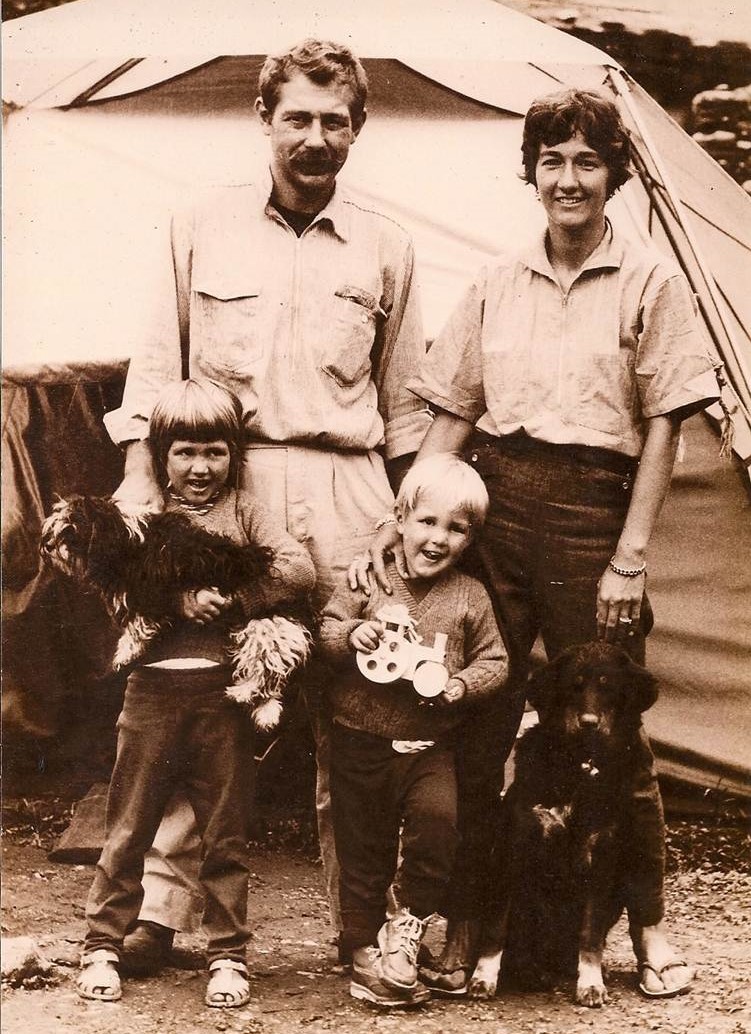
While the spirit of adventure plays a role in the Bishop-Marcus Award experience, doing difficult or inventive research in the field that brings valuable data back to NatureBridge is the most integral piece.
“Barry...that man loved fieldwork,” says Lila. “When he was working on the glacier for months, that wasn’t adventure; that was good, hard fieldwork.”
The award applications that offer a creative vision of fieldwork stand out, whether it is photographing receding glaciers in the Sierra Nevada to document their disappearance or studying successful ecovillages in order to create a sustainable land-based mini-economy. Project applicants have traveled to Mexico, Alaska, Madagascar, Brazil and more, looking at topics ranging from anthropology and art to geography and botany.
“Barry had vision,” says Lila. “He had great vision of possibilities and knew how to accomplish them.”
The commitment to see that vision through is one of the things that we often overlook when imagining scientists. White lab coats, sterile indoor environments, maybe a microscope or two and a few late nights — that isn’t the kind of research happening for Bishop-Marcus Award recipients.
“When you go into the field, whether for research or climbing, adversity is certain,” says Brent. “Field scientists, geographers — these people are tough. If you’re doing longitudinal studies over 40 years, that’s tough; that requires commitment. So does any good fieldwork.”
A more recent component of the award is the Campus Exchange. Inspired by Lila’s years spent as a teacher, the Campus Exchange sends a Bishop-Marcus Award recipient to another NatureBridge campus to share their project findings and experience. The recipient presents their findings during an event that would double as an appreciation party for Mel, Barry and all staff members of that campus. The exchange aligns with the award’s stated goal to “grow and give back to NatureBridge,” leading not only to professional development for the recipient, but community-building across campuses.
“I taught science at a Quaker school in Washington D.C. for years, and the best part about teachers’ meetings would be the exchanging of ideas,” says Lila. “You can’t work in a vacuum.”
You only exist as long as somebody remembers you. Mel and Barry believed in young people — their enthusiasm, energy and creativity — as long as young people are out there doing this in their honor...Mel and Barry exist.Lila Bishop
At the end of each Bishop-Marcus Award project, whatever suffering was had — bitter cold, intense heat, sleepless nights — is worth it. Recipients experience a small piece of what it was like to be Barry Bishop or Mel Marcus; to envision a unique project, dedicate weeks or months to field research and then to share what they learned in order to expand their horizons and those of the NatureBridge community.
“It’s just an amazing legacy, to have my dad’s name associated with it,” says Brent. “To give these young scientists an opportunity to get out into the field and follow in the legacy of Mel and Barry...it’s expanding the tribe. It can have a cascading effect and contribute to a vital body of knowledge.”
Beyond contributing to the field, the award also adds to the growing stature of these two pioneering scientists, ensuring they are both honored and remembered for their own landmark contributions to geography, mountaineering and exploration.
“You go to a cemetery, you read a tombstone, and you don't have any idea of what that person was like,” says Lila.
“You only exist as long as somebody remembers you. Mel and Barry believed in young people — their enthusiasm, energy and creativity — as long as young people are out there doing this in their honor...Mel and Barry exist.”


